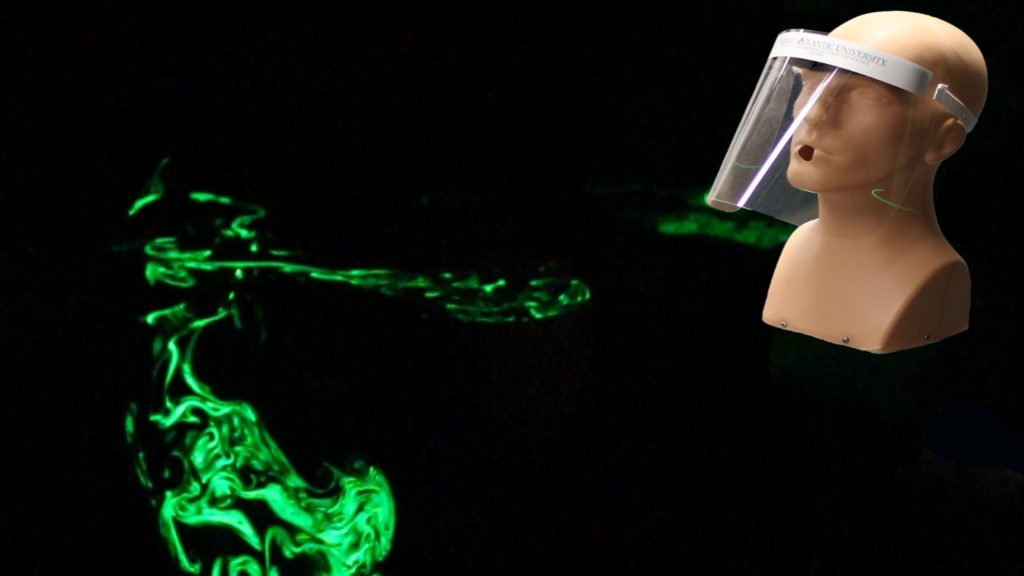From the Journal: Physics of Fluids
WASHINGTON, September 1, 2020 — As countries around the world experience a steep surge in COVID-19 infections, face masks have become increasingly accepted as an effective means for combating the spread of the disease when combined with social distancing and frequent hand-washing.

Increasingly people are using clear plastic face shields and masks with exhalation valves instead of regular cloth or surgical masks, since they can be more comfortable. In a paper published in Physics of Fluids, by AIP Publishing, researchers investigate whether they are as effective.
The visualizations showed face shields block the initial forward motion of a simulated jet of a cough or a sneeze, but the expelled droplets can move around the visor with relative ease and spread out over a large area depending on light ambient disturbances.
The visualizations for a mask equipped with an exhalation port illustrate a large number of droplets pass through the exhale valve unfiltered, which make it ineffective in stopping the spread the COVID-19 virus if the person wearing the mask is infected.
“As students return to schools and universities, some have wondered if it is better to use face shields, as they are more comfortable and easier to wear for longer periods of time,” said Siddhartha Verma, one of the authors. “But what if these shields are not as effective? You would be essentially putting everyone in a tight space with droplets accumulating over time, which could potentially lead to infections.”
The researchers used a hollow manikin head and simulated a cough or sneeze with a pressure impulse from a manual pump. Tracers composed of droplets of distilled water and glycerin were expelled through the mouth opening, and laser sheets visualized the spatial and temporal development of the ejected flow.
“We focused on the smaller droplets, since they can stay suspended for very long times and might contain enough virus particles to transmit COVID-19,” said Verma.
The research suggests that to minimize the community spread of COVID-19, it may be preferable to use high-quality cloth or surgical masks that are of a plain design instead of face shields and masks equipped with exhale valves.
“Even the very best masks have some degree of leakage. It’s still important to maintain physical distance while wearing them to mitigate transmission,” said Verma.
###
For more information:
Larry Frum
media@aip.org
301-209-3090
Article Title
Visualizing droplet dispersal for face shields and masks with exhalation valves
Authors
Siddhartha Verma, Manhar R. Dhanak, and John Frankenfield
Author Affiliations
Florida Atlantic University
